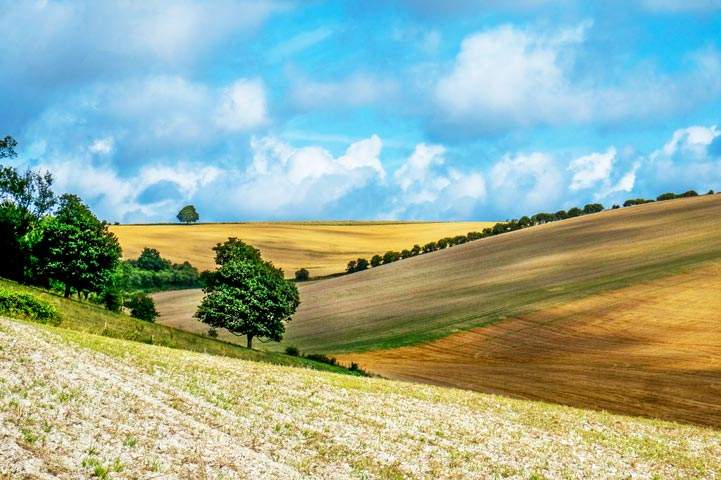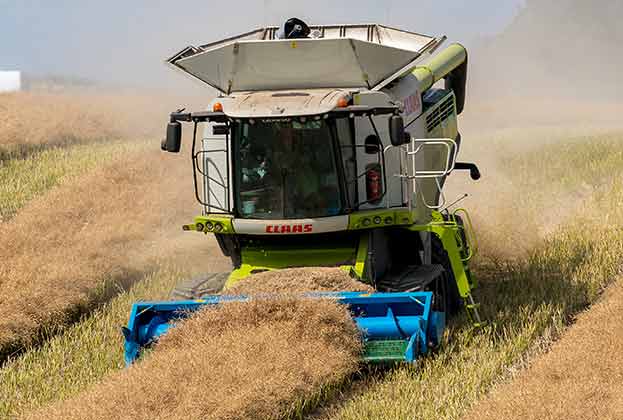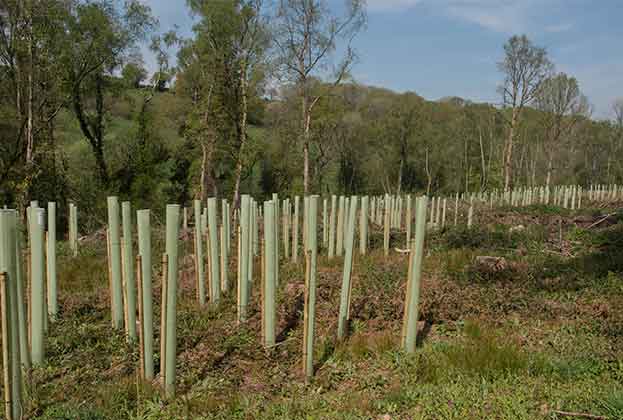Change in sentiment saw farmland values growing strongly throughout 2021, while supply continued to remain stubbornly low
Renewed confidence in the farmland market has contributed to an unexpected increase in demand, resulting in land values growing strongly throughout 2021 and gaining a momentum that looks set to continue. This confidence is being led by investors who see that global regulatory accountability for environmental impacts is shifting and that in response farmland presents a real asset investment opportunity that is high in environmental, social and corporate governance (ESG) values. A growing population and focus on decarbonising the economy means farmland is in demand for a broader range of uses than ever before – it is no longer just about food production.
Farmer buyers, the largest group in the GB farmland market, appear cautiously optimistic. Throughout 2021, successive policy announcements have shone increasing light on the nature and role of the industry once the Common Agricultural Policy’s influence comes to an end. Alongside this, emerging alternative markets have boosted opinion that dynamic farming businesses can navigate this tumultuous time.

SUPPLY AND DEMAND
After the record-breaking lows in 2019 and 2020 for publicly marketed farmland, there was an expectation that farm businesses would use the clarity provided by the raft of policy announcements to make decisions that would lead to a ’bounce back’ in supply in 2021. While supply increased by 7% on 2020 levels, it has only recovered to the volume seen in 2019 at 122,400 acres. This slower rate of supply increase suggests levels may not return to the ten-year average of 150,000 acres per annum for some time yet.
Nationally, supply has increased from the low of 2020, but it varies regionally. Supply in Scotland has increased 63%, which is a significant turnaround, but still falls short of the five-year average. Meanwhile, 83,500 acres were brought to the market in England, which was slightly less than in 2020.
For farm businesses, improved yields and strong commodity prices supported farm profitability in 2021 despite the first cut in subsidy support for farmers in England, while those in Scotland and Wales continued to benefit from their governments’ policies of maintaining support levels. However, average annual agricultural input inflation of 21.9% (according to the AF Agricultural Inflation Index) will impact farm profitability and challenge those that will not be sustainable without direct payment subsidy support. This may lead to an increase in the amount of farmland for sale, but the Environmental Land Management scheme (ELM) in England and emergence of other markets offering alternative sources of income will temper the extent to which supply is increased due to retirement or giving up farming.
Sustainable food production is at the core of Welsh and Scottish policy plans. In England, however, the emphasis upon it was weaker until the Sustainable Farming Incentive (SFI) was announced as one component of the ELM “public money for public goods” scheme. In 2022, the SFI will consist of three soil management standards with variable payment rates according to the level of ambition selected. Farmers can now evaluate its compatibility with their existing crop and livestock production systems. There are already some significant changes from the pilot, but it remains true that the scheme does not offer the same income or profit margin as the Basic Payment Scheme (BPS) and cannot be seen as its replacement.
The emphasis is upon creating a scheme that de-links agricultural support from production. Defra argues that there is little correlation between the two; in 2017, almost 60% of agricultural output came from just 8% of farmers operating on a third of land in England. Around half of this output is from the pig, poultry and horticulture sectors, which typically operate on small farms and could face productivity challenges unless a solution to their labour supply issues can be developed.
Despite the shift in farm sizes, there is not a clear trend among the farm types being brought to the market, suggesting no single sector is undergoing more significant structural change
Emily Norton, Head of Rural Research
While specialist smaller farms can thrive, across the wider industry the economies of scale favour larger businesses, meaning industry exits are more common among smaller farmers. Since 1995, smaller farms have become a larger proportion of the properties on the GB farmland market; their share has increased by 10%, reducing the proportion of larger farms on the market, particularly those between 250 and 999 acres. The largest farm sales, over 1,000 acres, remain rare and since 2011 make up on average only 1% annually of publicly marketed sales. Despite the shift in farm sizes, there is not a clear trend among the farm types being brought to the market, suggesting no single sector is undergoing more significant structural change than others.
Read the articles within Spotlight: The Farmland Market below.


